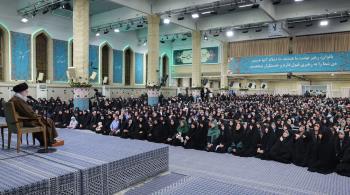Alwaght- The issue of migration has always been a humanitarian problem, causing controversy and difficulties for the destination countries, as it poses the same troubles for the countries through which the migrants pass in their way to their destination. In recent weeks, Hungary has been facing significant challenges such as massive number of Syrian refugees as well as migrants from some other countries flooding towards its borders in attempts to reach other European countries seeking asylum.
Meanwhile, the Hungarian government has taken tough measures to block the migrants’ passage through the country’s borders. The preventive actions include detention of the migrants who enter the country illegally, as treated like criminals.
The migrants, mostly Syrian, in past few days have managed to reach Austrian borders through Hungarian territories. They demanded asylum from European countries. In some cases, there have been clashes between refugees and the Hungarian police as they tried to forcefully pass the country’s borders. Many of the migrants protested the prolonged process of verification by Hungarian officers.
In order to prevent the flow of the asylum-seekers, the Hungarian authorities have stretched barriers in their borders with Serbia. Having 175 kilometers length, the barrier has been a controversial issue for a long period that finally got accomplished; the official Hungarian news agency MTI announced as quoted from country’s army on August 29.
The Hungary’s conservative government has hoped that the measure would decrease the number of asylum-seekers streaming through Balkans towards southern European countries in their way to the Europe’s north and west.
Most of the migrants heading to Hungary are actually intending to move to Europe’s west to arrive in Germany and Austria. “Migrant crisis is Germany's problem”, said the Hungarian Prime Minister Viktor Orban, adding that Germany is the destination of the asylum-seekers coming into the EU zone. Hungary won't allow the migrants to leave its soil unregistered.
Meanwhile, recently there were some indecent images circulating online which showed that the food is thrown to the migrants, as others depicted migrant camps in desperate conditions. Still, more images show the asylum-seekers used as construction workers by Hungary to build a wall in the country’s border areas, an issue which drew human rights activists’ concern and criticism.
The Hungary’s actions are taking place as German, British and French Ministers of Interior have discussed a plan to establish more registration centers in Greece and Italy. The German Minister of Interior Thomas de Maiziere, after meeting his British and French counterparts in Paris, said these countries have to create the mentioned capabilities by the end of 2015.
On the other hand, the European officials have demanded a fair distribution of the asylum-seekers among the Europe’s countries, a request opposed by some European leaders including Hungary’s Viktor Orban. However, the President of the European Parliament Martin Schulz has asked Hungary to cooperate with other European countries to find a solution for the problem of the asylum-seekers.
Criticizing Hungary’s government over improper treatment of the migrants waiting in huge numbers behind its borders, the Austrian government has noted that Hungarian treatment of the refugees echoes the Europe’s “dark days” in the Second World War times, an issue that could tarnish Europe's image in public opinions. The Austrian Chancellor has asked for sanctions over the countries that reject the European Commission’s proposal for distribution of the refugees among Europe’s countries.
Earlier, the German Chancellor Angela Merkel, whose country beside Sweden has taken in the largest number of the refugees coming to Europe, had said that the binding proposal of distribution of the refugees in the EU’s countries is an” important first step.” The proposed plan sees portioning out 120,000 refuges among all of the EU’s members, with consideration of the hosting country’s factors such as its GDP, population, unemployment rates, as well as the number of the asylum-seekers.
The figures suggest that at least 7,600,000 Syrians are internally displaced, as 4,000,000 others are displaced out of this crisis-hit country. The number of externally displaced Syrians could be added by 27,000 others by the end of 2015, notes the UN’s refugee agency UNHCR.


























